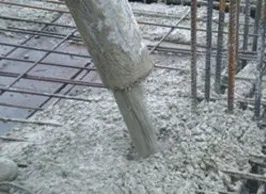Self-compacting concrete: Introduction
Self-compacting concrete (SCC), requiring no consolidation work at a site or concrete plants, has been developed in Japan to improve the durability and uniformity of concrete in 1988 (Okamura and Ouchi, 1999). The mix composition is chosen to satisfy all performance criteria for the concrete in both the fresh and hardened states. There is no standard method for SCC mix design, and many academic institutions as well as an admixture, ready-mixed, precast and contracting companies have developed their own mix proportioning methods. One of the most important differences between SCC and conventional concrete is the incorporation of a mineral admixture.
Thus, many studies on the effects of mineral admixtures on the properties of SCC have been conducted. These studies show the advantage of mineral admixture usage in SCC, such as improved workability with reduced cement content (Poppe and Shutter, 2005). Since cement is the most expensive component of concrete, reducing cement content is an economical solution. Additionally, the mineral admixtures can improve particle packing and decrease the permeability of concrete. Therefore, the durability of concrete is also increased. Industrial by-products or waste materials such as limestone powder, fly ash and granulated blast furnace slag are generally used as mineral admixtures in SCC.
Thereby, the workability of SCC is improved and the used amount of by-products or waste materials can be increased. Besides the economic benefits, such uses of by-products or waste materials in concrete reduce environmental pollution. Fly ash is an industrial by-product, generated from the combustion of coal in thermal power plants. The increasing scarcity of raw materials and the urgent need to protect the environment against pollution has accentuated the significance of developing new building materials based on industrial waste generated from coal-fired thermal power stations creating unmanageable disposal problems due to their potential to pollute the environment. Fly ash, when used as a mineral admixture in concrete, improves its strength and durability characteristics. Fly ash can be used either as an admixture or as a partial replacement of cement. It can also be used as a partial replacement of fine aggregates, as a total replacement of fine aggregates and as a supplementary addition to achieving different properties of concrete.
Searches related to Self-compacting concrete:
self-compacting concrete mix design, self-compacting concrete advantages and disadvantages, self-compacting concrete applications, self-compacting concrete ppt, self-compacting concrete properties, how to make self-compacting concrete, self-compacting concrete Slideshare, self-compacting concrete pdf


0 comments